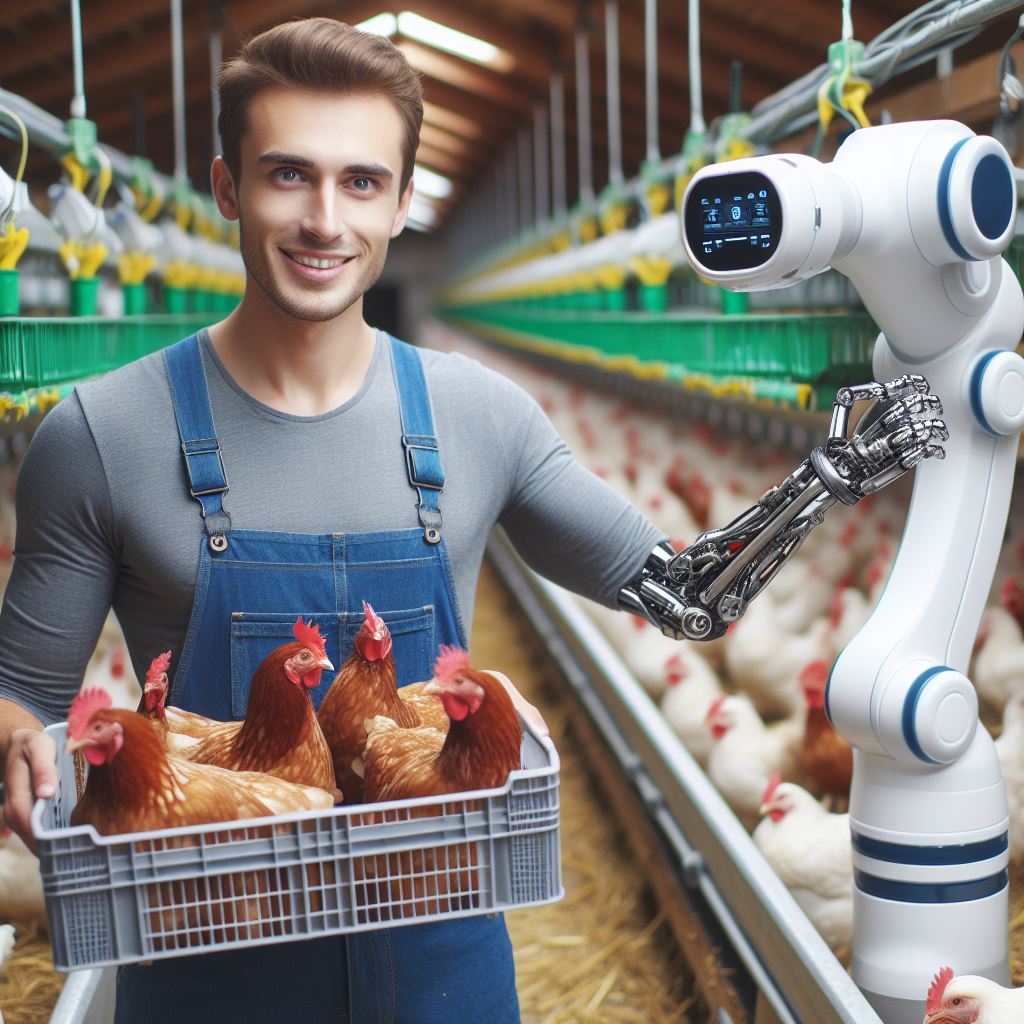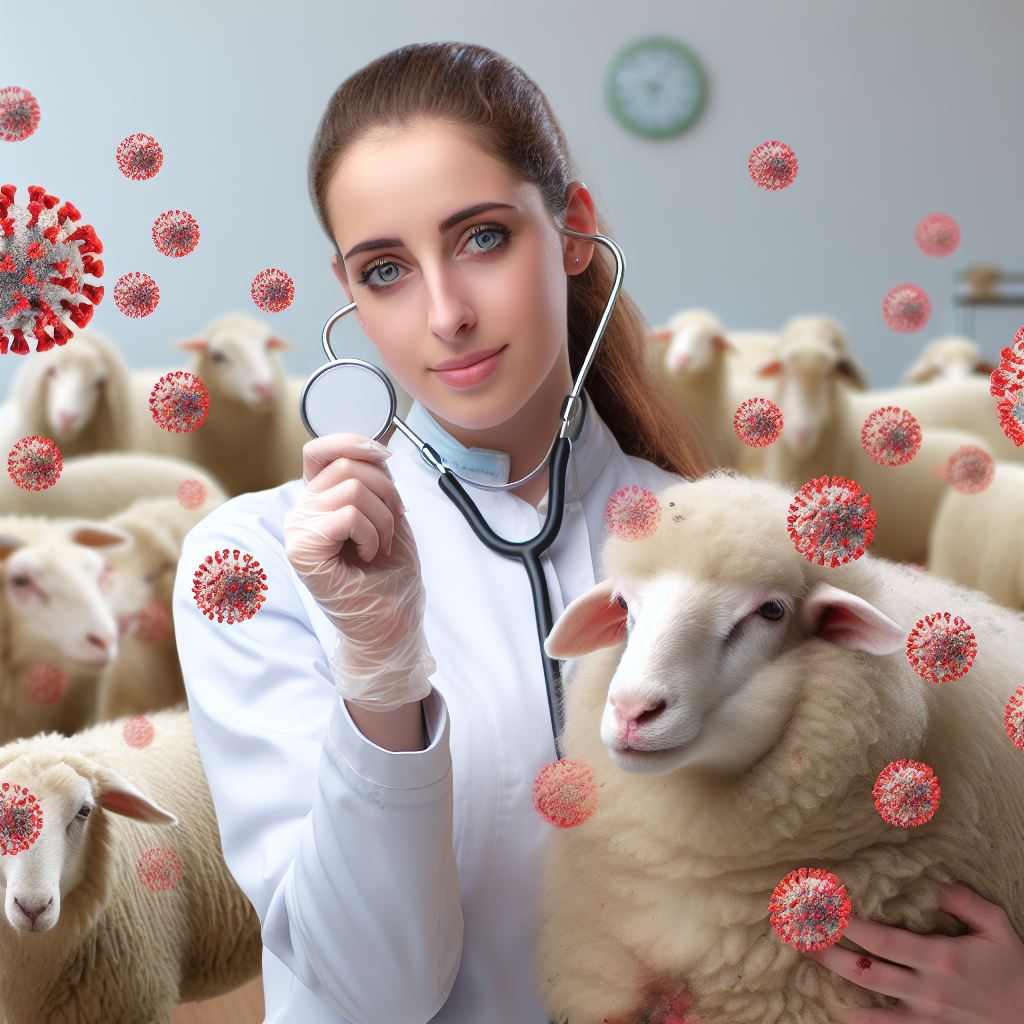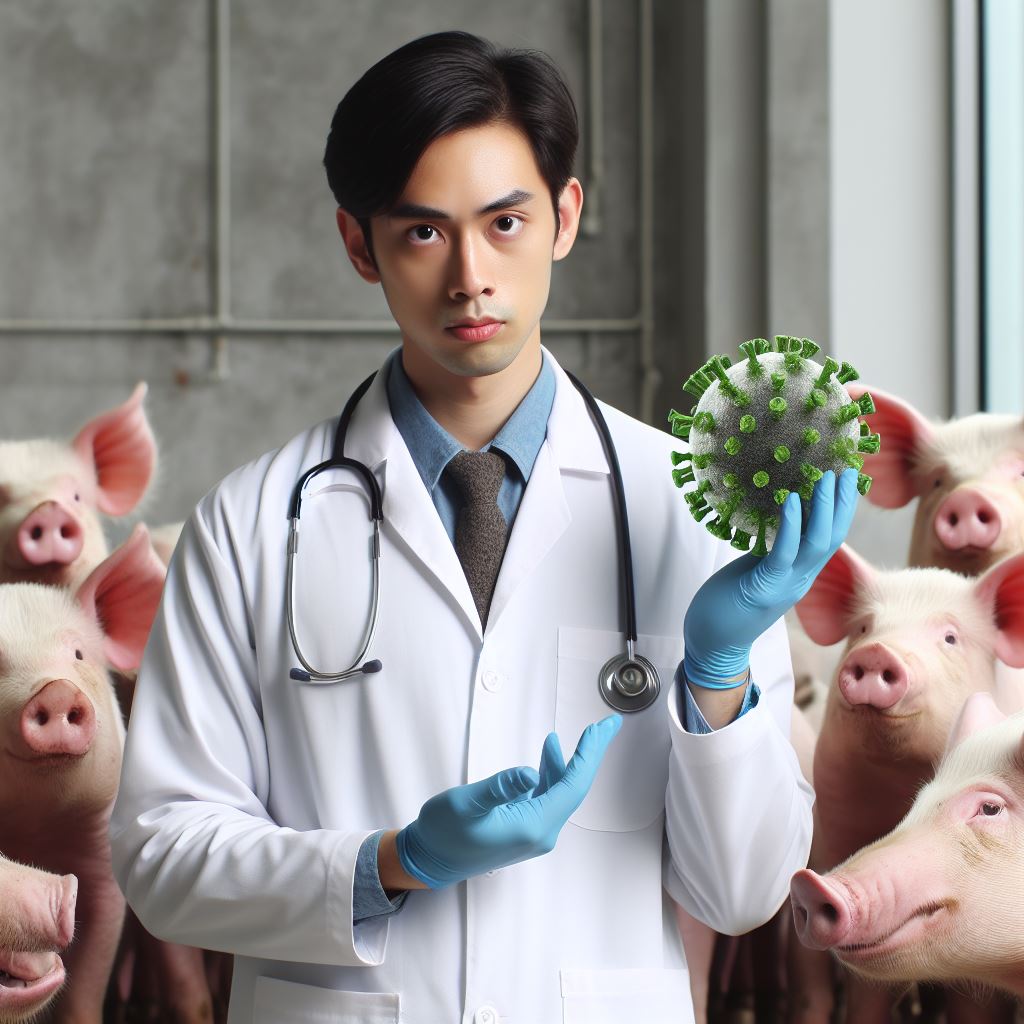Introduction
Let’s Explore Poultry Diseases: Prevention & Care Tips
In the realm of poultry farming, disease prevention and care are paramount for sustaining flock health and profitability.
This blog aims to underscore the critical importance of proactive measures in safeguarding poultry against diseases.
By delving into the intricacies of prevention and care, we seek to empower poultry farmers with the knowledge and strategies needed to ensure the well-being and productivity of their flocks.
Join us as we explore the nuances of disease prevention, share practical tips for care, and foster a proactive approach to poultry health management.
Together, let’s cultivate a thriving and resilient environment for poultry, fostering not only the welfare of the birds but also the prosperity of the farms that rely on them.
Common Poultry Diseases
Overview of the Most Common Poultry Diseases
- Newcastle Disease: Highly contagious viral infection causing respiratory and nervous system problems in poultry.
- Infectious Bronchitis: Viral respiratory disease leading to coughing, sneezing, and decreased egg production.
- Avian Influenza: Highly pathogenic virus causing severe respiratory and gastrointestinal symptoms in birds, potentially spreading to humans.
- Marek’s Disease: Viral illness affecting the nervous system, causing paralysis and tumors in chickens and turkeys.
- Coccidiosis: Intestinal disease caused by parasites, resulting in diarrhea, weight loss, and decreased growth.
- Fowl Cholera: Bacterial infection leading to sudden death, swollen joints, and respiratory symptoms in poultry.
- Avian Pox: Viral disease causing skin lesions, reduced egg production, and respiratory distress.
Impact of Poultry Diseases on Farms
- Economic Loss: Outbreaks can lead to significant financial losses due to increased mortality rates and decreased egg or meat production.
- Decreased Productivity: Infected birds show reduced growth, decreased egg quality, and a decline in overall farm productivity.
- Spread of Infection: Poultry diseases are highly contagious, spreading easily through direct or indirect contact, leading to rapid transmission among flocks.
- Increased Mortality: Certain diseases can cause high mortality rates, resulting in a reduction of the poultry population on the farm.
- Quarantine Measures: Farms affected by diseases often need to implement strict quarantine measures, limiting movement and preventing spread to other farms.
- Biosecurity Risks: Disease outbreaks highlight the importance of maintaining biosecurity protocols to prevent entry of pathogens into the farm premises.
- Market Reputation: Poultry farms affected by diseases may face negative impacts on their market reputation, leading to decreased demand for their products.
- Legal Consequences: Failure to control disease outbreaks can lead to regulatory actions, fines, or even closure of poultry farms.
In the poultry industry, common diseases such as Newcastle Disease, Infectious Bronchitis, Avian Influenza, Marek’s Disease, Coccidiosis, Fowl Cholera, and Avian Pox pose significant challenges.
These diseases can cause economic losses, decreased productivity, and various other negative impacts on poultry farms.
Implementing proper biosecurity measures and promptly addressing disease outbreaks are crucial for protecting poultry health and safeguarding the industry’s sustainability.
Read: Temperature Control Tech in Livestock Sheds
Disease Prevention Measures
Importance of Biosecurity
Biosecurity is crucial in preventing poultry diseases as it helps to keep out potential pathogens.
It involves measures such as restricting farm access, disinfection, and practicing good hygiene.
Implementing effective biosecurity protocols can significantly reduce the risk of disease outbreaks.
By limiting exposure to infected animals or contaminated areas, biosecurity protects the overall flock health.
Maintaining a Clean and Hygienic Poultry Environment
A clean and hygienic environment is essential for preventing the spread of poultry diseases.
Transform Your Agribusiness
Unlock your farm's potential with expert advice tailored to your needs. Get actionable steps that drive real results.
Get StartedRegularly clean and disinfect poultry housing, equipment, and feeding areas to eliminate pathogens.
Ensure proper waste management practices, minimizing contact with wild birds or pests that may carry diseases.
Good ventilation and temperature control also play a role in keeping the poultry environment disease-free.
Significance of Proper Vaccination Protocols
Vaccination is a key aspect of disease prevention in poultry farming.
Using appropriate vaccines according to recommended protocols helps build immunity in the flock.
Vaccines protect birds from specific diseases and reduce the severity of infections if they occur.
It is essential to consult with a veterinarian to develop a vaccination plan tailored to the flock’s needs.
Importance of Quarantine Procedures for New Birds
Quarantine procedures are crucial when introducing new birds into an existing flock.
Isolating new birds for a certain period allows for observation and detection of potential diseases.
During quarantine, it is essential to monitor for any signs of illness or unusual behavior in the new birds.
This helps prevent the introduction and spread of diseases that could jeopardize the entire flock’s health.
Therefore, disease prevention measures are crucial for maintaining a healthy poultry flock.
Implementing strict biosecurity protocols, maintaining cleanliness, following proper vaccination protocols, and practicing quarantine procedures for new birds are all essential.
By taking the necessary precautions, poultry farmers can greatly reduce the risk of diseases and ensure the well-being of their flocks.
Read: Essential Vaccines for Healthy Cattle Herds

Early Detection and Diagnosis
The importance of regular health checks and observation
Regular health checks and observation are vital in preventing and managing poultry diseases.
These practices help detect any potential issues early on, allowing timely intervention.
Poultry farmers should make it a routine to closely observe their birds daily.
By doing so, they can identify any changes in behavior, appetite, or appearance that may indicate an underlying health problem.
Regular health checks performed by a veterinarian are also crucial.
These checks involve a thorough examination of the birds, including the inspection of their body condition, feathers, eyes, beak, and legs.
Any abnormalities can be noted and addressed promptly.
Early detection of diseases through regular checks and observation enables swift intervention, reducing the risk of spreading and minimizing the impact on the flock’s health.
Describing common signs and symptoms of poultry diseases
Recognizing common signs and symptoms of poultry diseases is vital for their early identification and management.
Showcase Your Farming Business
Publish your professional farming services profile on our blog for a one-time fee of $200 and reach a dedicated audience of farmers and agribusiness owners.
Publish Your ProfileSome of these indicators include:
- Decreased appetite: Birds suffering from diseases often experience a loss of appetite. Unusual or sudden changes in their eating habits should be closely monitored.
- Behavioral changes: Sick poultry may exhibit lethargy, depression, or increased aggression. Any noticeable change in their usual behavior should be considered a cause for concern.
- Respiratory issues: Coughing, sneezing, discharge from the nostrils or eyes, and difficulty breathing can be signs of respiratory infections. These symptoms can point to diseases such as avian influenza or Newcastle disease.
- Diarrhea and changes in feces: The presence of loose or watery stools, changes in the color, consistency, or odor of feces can indicate gastrointestinal infections or other health problems.
- Abnormal feathering: Feather loss, ruffled feathers, or changes in feather coloration can be signs of various diseases, including mites or nutrient deficiencies.
- Drop in egg production: A sudden decrease in egg production or abnormal eggs (thin-shelled, misshapen, or soft) may suggest reproductive disorders or infections.
The role of diagnostic tests in identifying diseases
Diagnostic tests play a crucial role in identifying and confirming diseases in poultry. Some commonly used tests include:
- Blood tests: These tests help detect the presence of antibodies or pathogens in the bloodstream. They are particularly useful in diagnosing viral infections such as avian influenza.
- Fecal exams: Checking bird droppings for the presence of parasites or abnormal bacteria helps identify gastrointestinal disorders.
- Bacterial cultures: Culturing samples from infected birds can determine the specific bacteria causing the disease and guide targeted treatment.
- Necropsy: Conducting post-mortem examinations on deceased birds allows for a thorough assessment of the cause of death or illness.
- Serological tests: Serology involves testing blood samples for specific antibodies or antigens. It helps identify diseases like avian influenza and Newcastle disease.
- Molecular techniques: Advanced molecular tests, such as polymerase chain reaction (PCR), enable the identification of viruses or genetic material associated with various diseases accurately.
Diagnostic tests aid in promptly identifying diseases, allowing for appropriate treatment and control measures.
Consulting a veterinarian for accurate diagnosis and guidance can significantly improve poultry health and prevent disease outbreaks.
Most importantly, early detection and diagnosis of poultry diseases are crucial for their effective management.
Regular health checks, observations, and the use of diagnostic tests are essential tools for identifying diseases promptly and implementing appropriate measures to prevent their spread.
By staying vigilant and proactive, poultry farmers can ensure the health and well-being of their flocks.
Read: Mobile Apps for Efficient Herd Management
Care Tips for Poultry Health
Proper Nutrition and Balanced Feed Requirements
Implementing these care tips will greatly contribute to the overall health and well-being of your poultry.
Proper nutrition ensures they receive the necessary nutrients to meet their physiological requirements.
A balanced feed with the right mix of grains, proteins, vitamins, and minerals is crucial for growth and development.
Importance of Providing Clean Water and Adequate Ventilation
Clean water plays a vital role in poultry health as it aids in digestion, helps regulate body temperature, and hydrates the birds.
Water sources should be regularly cleaned and monitored to prevent bacterial growth and contamination.
Adequate ventilation is necessary to maintain good air quality inside the poultry house.
It prevents the buildup of moisture, ammonia, and dust, reducing the risk of respiratory problems in birds.
Significance of Regular Exercise and Stress Reduction Techniques
Regular exercise is essential for poultry to maintain muscle strength, agility, and overall fitness.
Encourage free-range activities or allocate enough space for them to move around in their enclosure.
Stress reduction techniques are crucial to promote good mental health and overall well-being in poultry.
Providing a calm and quiet environment with minimal disturbances can help minimize stress-related health issues.
Guidance on Managing Flock Density and Socialization
Managing flock density is important to ensure each bird has sufficient space to navigate and exercise.
Overcrowding can lead to stress, aggression, and the transmission of diseases, compromising overall flock health.
Socialization plays a vital role in the behavioral development of poultry.
Allowing birds to interact with each other promotes social behaviors and reduces the risk of aggression.
By following these care tips, you can maintain a healthy and thriving poultry flock.
Remember to consult with a poultry expert for specific dietary requirements and to address any individual health concerns.
Read: Eco-Friendly Livestock Equipment: What’s New?
Treatment and Management
Basic Treatment Options for Common Poultry Diseases
- Administering antibiotics prescribed by a veterinarian is crucial to treat bacterial infections in poultry.
- Applying topical ointments or creams on wounds can promote healing and prevent secondary infections.
- Isolating sick birds in a separate clean and warm area helps prevent the spread of diseases.
- Providing supportive care such as fluids, electrolytes, and proper nutrition can aid in the recovery process.
- Using antifungal medications effectively treats fungal infections commonly found in poultry.
Importance of Consulting a Veterinarian for Accurate Diagnosis and Personalized Treatment Plans
- Veterinarians possess the knowledge and experience necessary to accurately diagnose poultry diseases.
- They can recommend the most suitable treatment plan based on the specific disease, age, and breed of the flock.
- Veterinarians also provide professional guidance on appropriate medication dosage and administration.
- Regular consultations with a veterinarian ensure timely detection and treatment of diseases, minimizing flock mortality.
- They can advise poultry owners on proper biosecurity measures to prevent future disease outbreaks.
Tips for Managing Disease Outbreaks and Preventing the Spread of Infections
- Implement strict biosecurity measures to minimize the risk of introducing diseases to the poultry farm.
- Maintain a clean and sanitized environment by regularly disinfecting equipment, housing, and vehicles.
- Quarantine new additions to the flock for at least two weeks to monitor their health status and prevent disease transmission.
- Keep records of vaccination schedules, treatments, and disease outbreaks to track and analyze trends.
- Practice proper waste management to reduce disease transmission through contaminated feces.
- Control external pests, such as rodents and wild birds, that may introduce diseases to the flock.
- Educate farm workers on the importance of hygiene, including handwashing and wearing protective clothing.
- Cull severely affected birds to prevent the spread of highly contagious diseases.
- Encourage early reporting of unusual signs or symptoms in birds to identify potential disease outbreaks promptly.
- Stay updated on the latest research and developments in poultry disease prevention and management.
By following these treatment and management practices, poultry owners can successfully combat diseases, ensure the well-being of their flock, and maintain a profitable and sustainable operation.
Remember, prevention is always better than cure!
Conclusion
Summarize Key Points
- Identification and understanding of common poultry diseases.
- Proactive measures: biosecurity, vaccination, and regular health monitoring.
- Prompt isolation and treatment strategies.
- Emphasis on cleanliness and hygiene in poultry farms.
Encourage Prioritization
- Prioritize disease prevention for sustainable poultry farming.
- Implement care strategies to ensure flock health.
- Embrace proactive measures for enhanced farm profitability.
Vigilance, proactive measures, and hygiene practices are the foundation for poultry disease prevention.
Prioritize the health of your flock for a thriving and profitable poultry farming venture.




